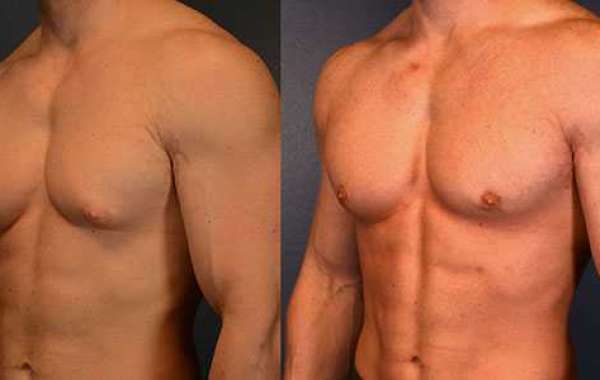Enlarged male breasts, medically known as gynecomastia, can be a source of embarrassment and self-consciousness for many men. This condition is characterized by excess glandular tissue and fat in the breast area, leading to a feminine appearance.
Dr. Mrinalini Sharma of Aestiva Clinic, who provides the best gynecomastia surgery in Delhi, explains that gynecomastia is one of the most embarrassing issues among men today. Thankfully, due to technical advancements, the condition can be resolved. If you or someone you know is struggling with gynecomastia, it's essential to understand the causes and available treatment options.
Causes of Gynecomastia
Gynecomastia can occur due to various factors, including hormonal imbalances, certain medications, obesity, genetic predisposition, and underlying medical conditions. Hormonal imbalances, particularly increased estrogen levels or decreased testosterone levels, are a common cause of gynecomastia. This hormonal imbalance can occur during puberty, resulting in temporary breast enlargement that often resolves independently. Gynecomastia, however, may continue into adulthood in some circumstances.
Dealing with Gynecomastia
- Lifestyle Modifications: If gynecomastia is primarily caused by weight gain or obesity, lifestyle modifications such as regular exercise and a healthy diet can be helpful. Losing excess weight can reduce the fat in the breast area and improve the appearance of gynecomastia.
- Medication Management: In some instances where gynecomastia is caused by anti-androgens, anabolic steroids, or certain antidepressants, a healthcare provider may recommend alternative medications or adjust the dosage to minimize breast enlargement.
- Hormone Therapy: Hormone therapy may be considered in cases where hormonal imbalances cause gynecomastia. This can involve medications that regulate hormone levels, such as selective estrogen receptor modulators (SERMs) or aromatase inhibitors. Make sure to visit the best cosmetic surgery clinic in Delhi for a proper consultation.
- Surgical Intervention: Surgical intervention may be necessary for individuals with severe or persistent gynecomastia who don't respond to lifestyle modifications or medication management. There are two standard surgical procedures used to treat gynecomastia:
- Liposuction: Liposuction is often used when enlarged breasts are primarily due to excess fatty tissue. During this procedure, a small incision is made, and a cannula is used to remove the excess fat from the breast area.
- Mastectomy: Mastectomy involves the removal of glandular tissue and excess skin, providing a more comprehensive reduction of breast tissue. Sometimes, liposuction may be combined with a mastectomy to achieve the desired results.
It's essential to consult with a qualified healthcare professional or a plastic surgeon specializing in gynecomastia to determine the most suitable treatment option based on one’s circumstances.
Dealing with the emotional impact of gynecomastia is also crucial. Contact supportive friends, family members, or support groups to discuss one’s concerns and feelings. Remember, gynecomastia is a common condition that affects many men, and seeking professional help is a positive step towards resolving the issue and regaining one’s confidence.
In conclusion, gynecomastia can be a distressing condition for men, but effective treatment options are available. Lifestyle modifications, medication management, hormone therapy, and surgical intervention such as liposuction or mastectomy can help address gynecomastia and improve the appearance of the chest. If one wants gynecomastia surgery in Delhi, visit Dr. Mrinalini Sharma at Aestiva Clinic.










